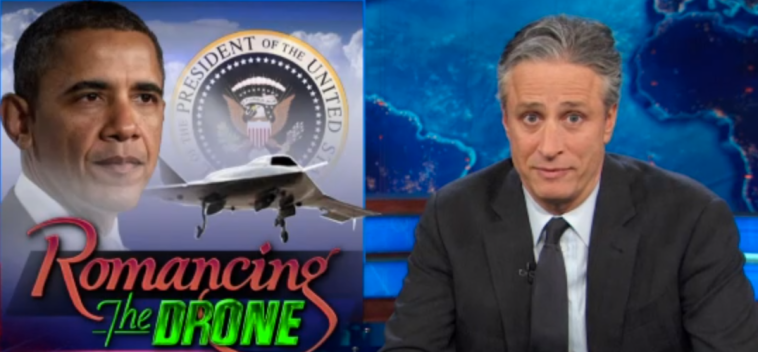By now you’re likely aware that our government has an extensive drone campaign in the Middle East and North Africa. Targets are selected personally by the President using a secret “kill list,” and though drone strikes are currently on the decline in Pakistan, they’re unlikely to go away entirely (particularly in Yemen) during Obama’s presidency.
Videos By Rare
But why do drones get so much attention? Bombs and planes have been around a long time—what makes drones so special?
Here’s seven reasons why drones are such a big deal:
1. Drones offer scary new surveillance capabilities. People are pretty much a fixed size. You can’t make a manned aircraft smaller than the person manning it. Drones, however, can be tiny. Super tiny. The size of bugs, in fact. When it comes to surveillance (and potentially assassinations), this makes drones much more of a threat than manned aircraft. You won’t miss the chopper hovering outside your window; you will miss the fly on the wall.
2. Drone warfare is bad for the drone pilots. Dropping bombs by remote control allows drone operators to be thousands of miles removed from their targets. It’s inherently uncertain and minimizes the very real psychological cost of hitting the kill button. Said one former drone operator, “We always wonder if we killed the right people, if we endangered the wrong people, if we destroyed an innocent civilian’s life all because of a bad image or angle.” When the American military is already suffering from a tragic suicide epidemic, adding the psychological strain of drone warfare can only make matters worse.
3. Speaking of the victims, the ratio of civilians to terrorists killed may be as high as 50:1. In Pakistan, a major target for US drone strikes, as few as 2% of those who die by our drone strikes are high-level terror suspects. As for the other 98%, it’s difficult to determine who’s a civilian and who isn’t. That’s because the Obama Administration classifies every male from 18 to 60 who is killed as a terrorist, regardless of evidence. This “guilty until proven innocent” rule gives the President free reign—all while pretending that every kill is a success. Many of these men are simply poor farmers in the wrong place at the wrong time. Some estimates put the civilian to terrorist kill ratio as high as 50:1!
4. Drones’ first victim is the Golden Rule. The high rate of civilian casualties contradicts the “drones are super precise” narrative we often hear. Conor Friedersdorf poses this thought experiment about drones:
We’re often told how precise drone strikes are. Obama Administration officials have called them surgical. If a surgery were happening in the building next door I wouldn’t be worried about getting nicked by the scalpel. Would you be worried for your safety if you were 100 yards away from drone strike? Say you’re lying in bed one night, and in the house next door, a terrorist is lying in his bed.
Would you want a drone strike to take him out?
If next door is too close for comfort, do you think the U.S. military or the CIA should be allowed to carry out drone strikes on terrorists with innocent people next door?
5. Many drone strikes kill women and children. The 50:1 statistic is awful—but it gets worse. Even putting aside the dubious classification of many male victims, US drone strikes also kill a high percentage of women and children. Our government has even deliberately targeted wedding celebrations, and it has also hit weddings by mistake. And the most horrifying part? There’s a technique called “double-tap droning,” which is where the drone bombs a target, waits a few minutes, and then circles back to kill the first responders as they rush to help the victims.
6. Drones are creating a culture of fear and hatred. “We live in fear day and night,” said a Yemeni man whose area has suffered drone strikes. “Our children and women cannot sleep.” Their fear is more than justified: In 2013 the Pentagon actually got rid of its ban on civilian casualties. Malala Yousafzai, the Pakistani girl who survived an al-Qaida attack for her pro-education activism, says of drone strikes: “It is true that when there’s a drone attack the terrorists are killed…But 500 and 5,000 more people rise against it and more terrorism occurs.”
7. In fact, drone strikes make Americans less safe. Unmanned drones can seem like a good way to keep US soldiers safe, but they ultimately put more Americans in danger in the long run. In places like Pakistan and Yemen, “Drone strikes are causing more and more [people] to hate America and join radical militants; they are not driven by ideology but rather by a sense of revenge and despair.” In other words, when we send drones to kill terrorists, we actually radicalize people who otherwise had no ill will toward our country. Our drone policy is making terrorists out of ordinary people.
Miya Jan is an Afghan man whose family, including his 18-month-old nephew, was killed by US drone strike. He said: “There were pieces of my family all over the road. I picked up those pieces from the road and from the truck and wrapped them in a sheet to bury them. Do the American people want to spend their money this way, on drones that kill our women and children?”
Surely our answer can only be “No!”

